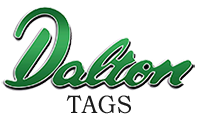A history of Livestock ID Tags
From the beginning of the domestication of livestock, humans have sought to mark what is theirs. It makes sense: proving ownership, while it may seem somewhat archaic in modern times, was an important part of keeping track of any herd. The human motivations to identify and trace livestock throughout history have really not drastically changed but the technology has. Animal identification has included branding, collars, tattooing and ear notching; all means to mark ownership, identify lineage, and trace and monitor disease.
The earliest documented event of animal identification purportedly dates to 1275 when the Brit, Thomas of Walsingham, related his investigation of a certain sheep disease that plagued British sheep for a quarter century. The disease vector was, at that time, pinpointed to a single sheep import from France. While the circumstances surrounding use of identification is unclear, what is clear is that disease has always driven humans to monitor livestock in some fashion.
In 1799, Sir Joseph Banks created the first known modern ear tag, made of tin, as a means of identification for the Merino flock of sheep owned by King George III. Since that time, modifications and improvements of the ear tag have followed the needs of farming industry. Cost, loss, efficiency, theft have been considered as new technologies have become available. Shortly after WWII, steel and nickel were quickly replaced with plastic, a fairly new, lightweight, sanitary, weather resistant material for the times. Quickly, and often due to governmental oversight in countries that were requiring traceability, the ear tag was modified and perfected. In 1953, the first self-piercing ear tags appeared on the market and provided an efficient and blood free way of identifying livestock, thus ensuring less transfer of disease. Across the globe, modern governmental eradication requirements for tuberculosis, brucellosis, scrapies and pseudorabies have mandated ear tagging with specific requirements for the tags. BSE outbreaks in the UK, then in the USA, saw the expansion of Electronic Identification ear tags or EID. Further, RFID ear tags, allow for easy identification for all pertinent information of an individual animal as radio frequency transmits data right from the animal to computer-based software. They offer a unique and truly innovative approach to management whether that concerns feed rations based on a number of factors such as age, lactation, gestation, etc., as well as all important disease monitoring, pedigree notation, medical treatment records and individual performance data. Modern ear tags also serve as insect repellent tools and more interestingly as means for actual tissue capture for laboratory testing, such as the Dalton BVD Tag & Test range.
All breed registries require permanent identification for recorded animals in order to maintain the integrity of parentage. The advancement of animal genetic coding has driven producers to see the benefit of DNA testing which not only proves lineage but can be used in a smart and educated breeding program. Today’s producers are able to strategically design breeding programs based on genetics in order to choose for production, body type, udder shape, casein content, birth weight and a whole host of other genetic factors. And of course, the ear tag industry has modified its products to meet those needs. The Dalton Tissue Sampling ear tag was created with the breeder in mind. DNA collection is integrated into its design and allows for an efficient and cost-effective capture of genetic material for intelligent breeding decisions. The future of ear tag innovation is only limited by the creativity of enterprises like Dalton Tags who understand the needs of its clients.


